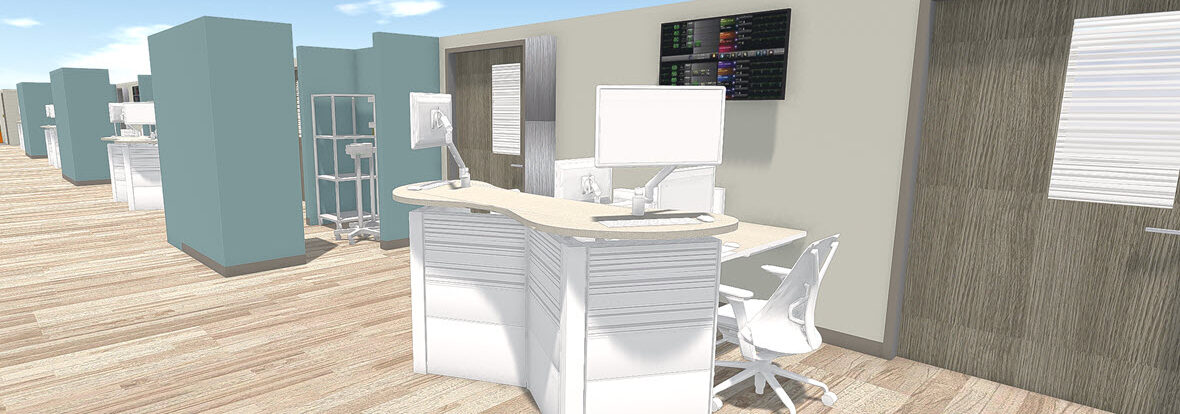Utilizing best in class software that allows the building industry to visualize their 3D designs with true to scale walkthroughs is vital. Enter IrisVR – a virtual reality (VR) solution for the architecture, engineering, and construction (AEC) industry. Their new software, Prospect, streamlines workflows to improve efficiency on construction projects, helping minimize rework costs and project delays.
As Director of VDC at Gilbane Building Company, I have seen firsthand that Prospect has become a tremendous addition to Gilbane VDC’s tool belt. Prospect helps our project teams better understand installation and sequencing requirements for complex spaces, and our designers can understand the impact of coordination issues and site constraints.
While VR has been around for several years, it’s not always efficient to implement on a project. Historically, it took time to make sure models were optimized, lighting/environments were built, etc. Gilbane wanted a solution where we wouldn’t have to spend two to three days adjusting a model just to have changes made and have to go through that process again. In addition, since most of our workflows go through Navisworks, we wanted a resolution where we’d be able to utilize the CAD models we receive from our trade contractors, and Prospect allows us to do that.
Multi-User Capability
Prospect has a multi-user function that allows up multiple individuals to join a virtual meeting and experience a walkthrough of the same model together. Up to 12 users can join from anywhere in the world, using their own headsets. This multi-user capability is a game-changer, as users experience the space simultaneously. Even if users don’t have VR headsets, they can still join in and experience the space on their own, or alongside another user. Within a matter of minutes, you can go from running a Navisworks model, to running a multi-user VR meeting.
Implementation
Gilbane has implemented Prospect slowly. First, we introduced it at some of our weekly project coordination meetings working with our sub-contractors. By doing this, we were able to get them to visualize and experience congested or tight areas in the model. Second, we introduced it to some of our design teams so they too could experience the space, specifically those ones who were still drawing in 2D.
By slowly integrating Prospect into our workflows, we were able to get our sub-contractors and design teams bought into the process. We didn’t want to completely change how our coordination meetings were run, but rather facilitate them for better decision-making.
VR versus no VR
Oftentimes people have heard how VR can make people nauseous, so some people are a bit hesitant to try it. Yet once they do, they realize the difference between bad VR content and great VR content, and are surprised that they aren’t nauseous.
In a recent multi-user meeting, I walked the client and team of nurses through a series of patient room doors with varying sizes of glass and opacity. They were able to go up to each door option and see what it looked like and make a decision that offered the patient the most privacy. Without VR, that decision would have been made from a series of print-outs, and without the opportunity to experience first-hand our level of sophistication and how we’ve been able to work collaboratively with the architect/designers to enhance decision-making.


One Reply to “Spotlight on VDC Innovation: Prospect”
Joe Perkins
good article Rawle. The VR industry has really gone a long way in recent years. much better platforms and ease of use.
I’m glad we are staying on top of it.
Comments are closed.